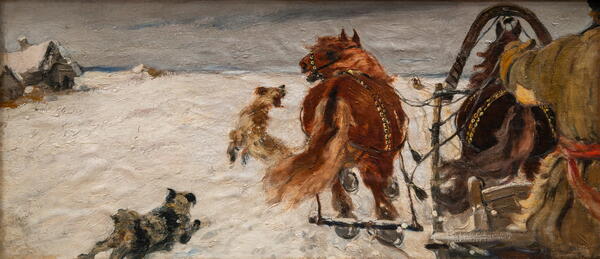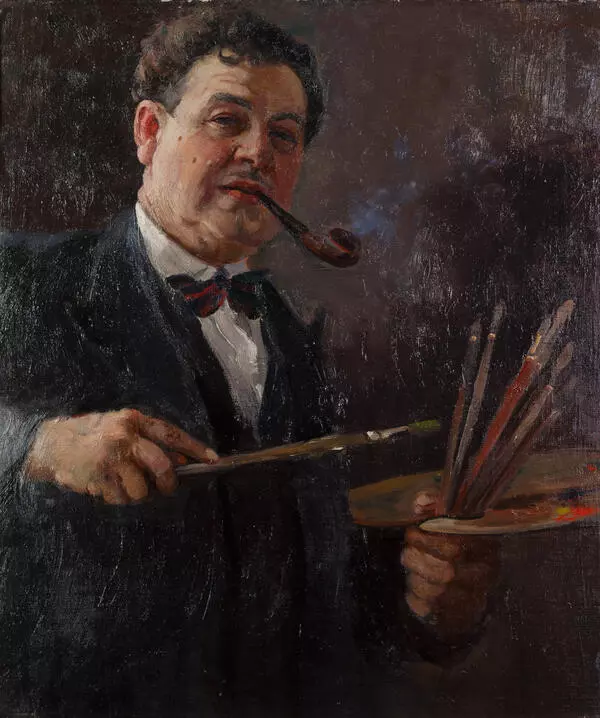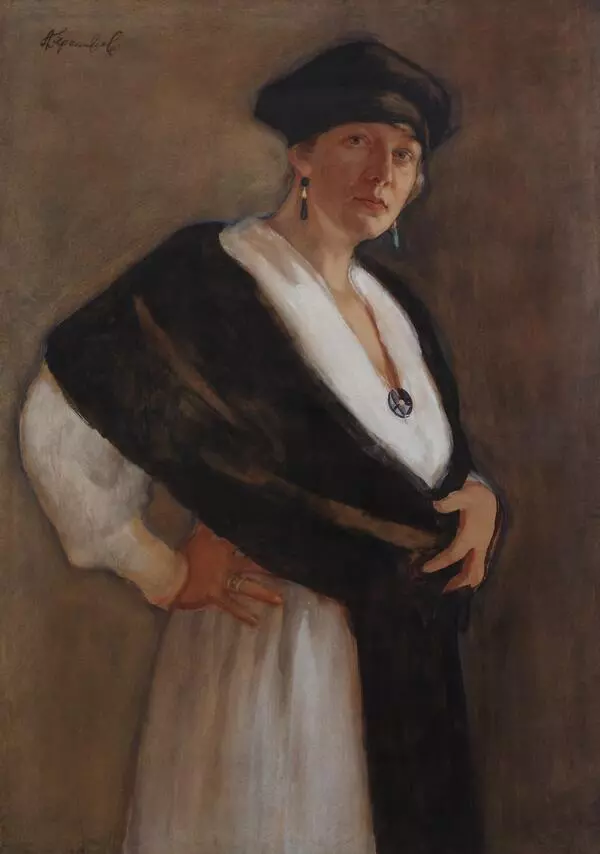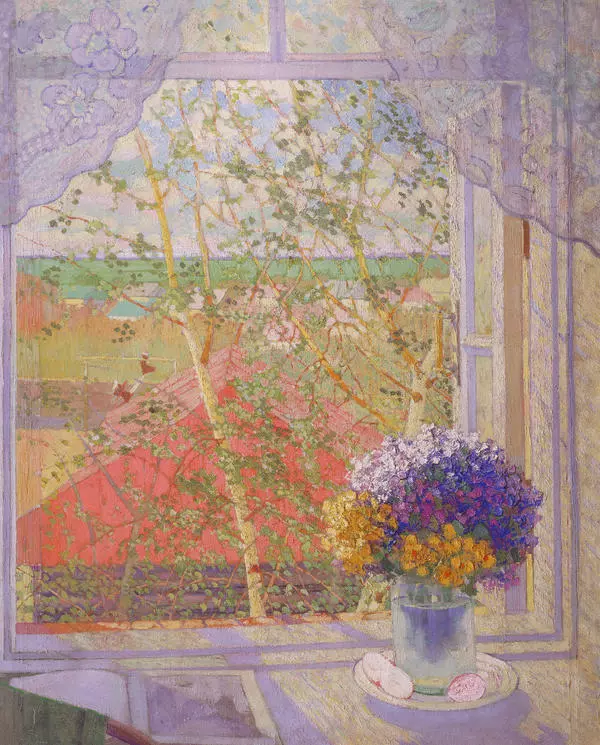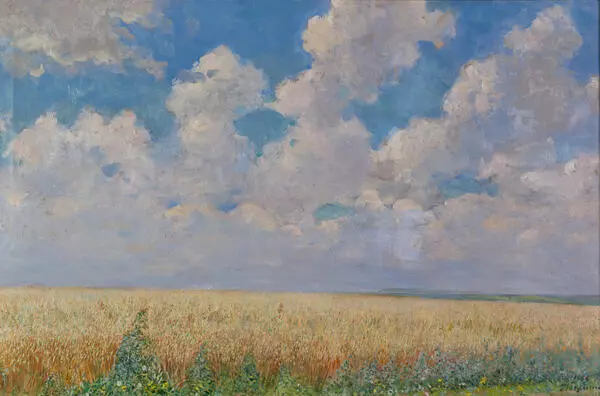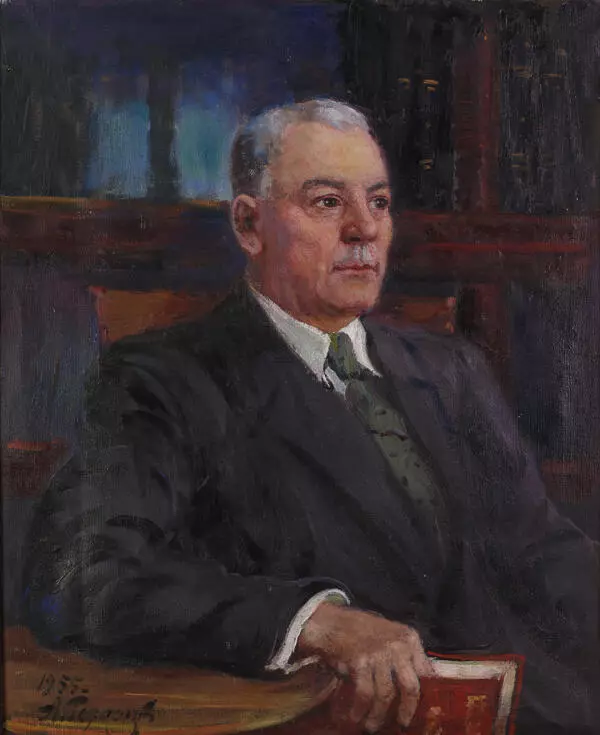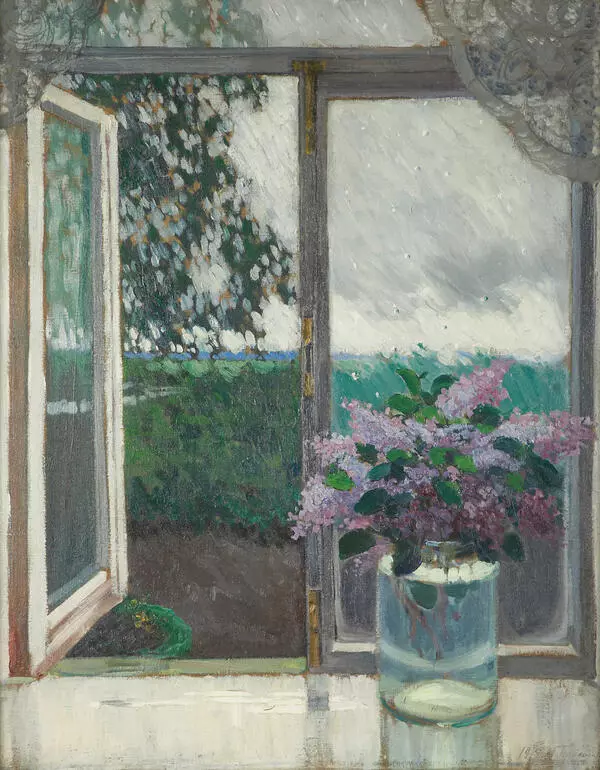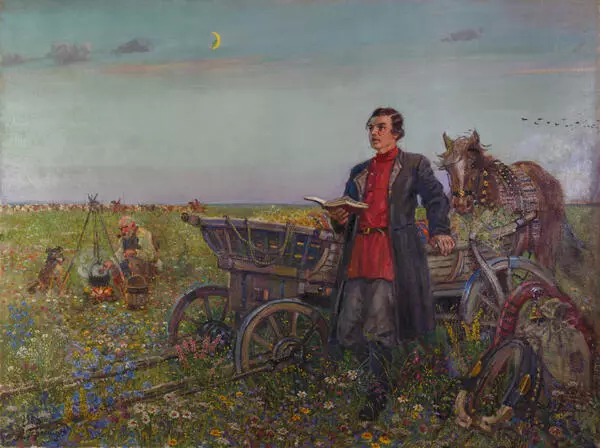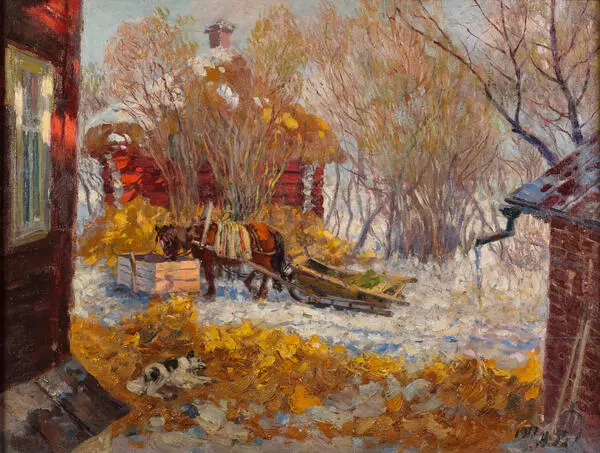When still young, Sasha Gerasimov, together with his father, “rode along all the roads around the town of Kozlov.” The artist’s father, Mikhail Safronovich Gerasimov, was a livestock trader. It was necessary to travel, find out the prices, and then drive herds of horses or cattle… All those pictures of life, images of the road, and the dashing gallop of horses were imprinted in the memory of the future artist.
Alexander Mikhailovich Gerasimov created the painting “Troika” on a steppe farm near the town of Kozlov. The work was presented in 1915 at a student exhibition of the Moscow School of Painting, Sculpture and Architecture, where the artist studied at the time. Here is how he explained what he depicted, “When you ride a troika, you usually sit closer to an edge of the sled or the coach and look past the back of the coachman. In front of your eyes there will be the rear of a trace horse, and farther on — the road and the landscape around. If you ride through a village or past a farm, dogs are barking at the horses; the barking of dogs and the ringing of bells merge into a kind of enchanting music. At least that is how I felt.”
The painting “Troika” is notable for its bold, vigorous, yet extremely precise manner of painting, which perfectly matched the impetuous nature of the artist. This work is largely associated with images of Russian folklore, and works of classical literature. A significant part of the canvas is taken by snow. Snow covers everything around: the road and the houses of the peasants, standing aside from the running horses. At the same time, the picture is inspired by direct impressions from the black earth region, from a breathtaking fast ride in a sleigh along a snow-covered rural road, with horses and dogs racing each other. It conveys the element of fast movement. Due to a peculiar composition, the viewer feels like a participant in the movement, the fast running of horses across the snow-covered expanses of fields — as if sitting in a sleigh and riding a carriage led by three horses. One could imagine that the artist managed to convey as much as the sounds: an earlier (1912) painting on the same subject from the collection of the Tretyakov Gallery is even entitled “Barking Dogs and Ringing Bells”.
Alexander Mikhailovich Gerasimov created the painting “Troika” on a steppe farm near the town of Kozlov. The work was presented in 1915 at a student exhibition of the Moscow School of Painting, Sculpture and Architecture, where the artist studied at the time. Here is how he explained what he depicted, “When you ride a troika, you usually sit closer to an edge of the sled or the coach and look past the back of the coachman. In front of your eyes there will be the rear of a trace horse, and farther on — the road and the landscape around. If you ride through a village or past a farm, dogs are barking at the horses; the barking of dogs and the ringing of bells merge into a kind of enchanting music. At least that is how I felt.”
The painting “Troika” is notable for its bold, vigorous, yet extremely precise manner of painting, which perfectly matched the impetuous nature of the artist. This work is largely associated with images of Russian folklore, and works of classical literature. A significant part of the canvas is taken by snow. Snow covers everything around: the road and the houses of the peasants, standing aside from the running horses. At the same time, the picture is inspired by direct impressions from the black earth region, from a breathtaking fast ride in a sleigh along a snow-covered rural road, with horses and dogs racing each other. It conveys the element of fast movement. Due to a peculiar composition, the viewer feels like a participant in the movement, the fast running of horses across the snow-covered expanses of fields — as if sitting in a sleigh and riding a carriage led by three horses. One could imagine that the artist managed to convey as much as the sounds: an earlier (1912) painting on the same subject from the collection of the Tretyakov Gallery is even entitled “Barking Dogs and Ringing Bells”.

